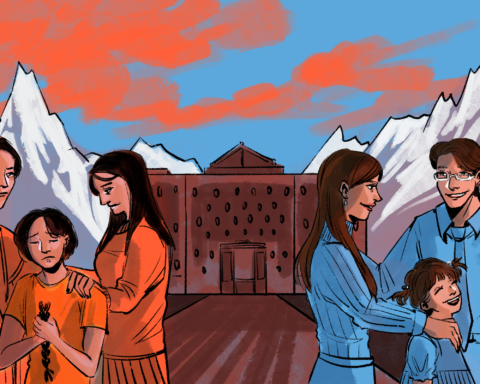If Australia and Canada were brothers, they would very likely be twins. These two nations have evolved in parallel on either side of the globe, united by vast geography and an immigrant-based demography.
When Prime Minister Kevin Rudd read out a statement of apology to his nation’s aboriginal “Stolen Generations” in Canberra last February, he was also foreshadowing a similar sentiment in our own nation. Like Canada, the Australian government had forcibly enrolled indigenous children into residential schools, heaping indignities that have only recently been formally recognized as a gross injustice.
Australia is also the only nation on earth that has a larger foreign-born population than Canada’s. In 2005, one in four Australians was born abroad, while in Canada, immigrants represented roughly one in five. In another parallel, immigrants to both countries can broadly be classed into three groups – economic, family and humanitarian.
So, when an Australian academic, Lesleyanne Hawthorne, does a serious piece of research comparing the immigration systems of the two countries and comes to the conclusion that “economic migrants have performed indisputably better in Australia than in Canada in the past decade,” we should be asking how come?
Ms. Hawthorne, associate dean (international) at the University of Melbourne, found that at the start of the decade (2001), the outcomes for economic migrants moving to Australia and Canada were almost identical, in fact, uncannily so. Her 52-page recent research paper reported the following findings among those who had arrived in between 1996 and 2001 –
* 65 per cent of the recent arrivals to Canada were employed, compared to 66 per cent in Australia;
* Of them, 30 per cent had found “professional positions” in Canada, compared to 31 per cent Down Under;
* Birthplace strongly influenced the likelihood of immigrants gaining “professional positions” in both nations, with those arriving from traditional English-speaking nations doing far better than those from Asian countries.
But by May 2006 the situation had changed rather dramatically. While the rate of immigrant employment went down in Canada, the number of those finding jobs within six months of arrival in Australia jumped to 83 per cent. Comparing employment data between 1995 and 2001, the researcher found that those who found jobs within six months of landing in Australia went up from 57 per cent to 81 per cent, while in Canada it went south from 64 per cent to 60 per cent.
So, what was the game changer? According to Ms. Hawthorne, “Since 1999, Australia, in contrast (to Canada), has used research evidence to exclude economic category applicants economic category applicants at risk of poor employment outcomes at point of entry, by considerably expanding pre-migration English language testing and mandatory credential assessment, and awarding bonus points for high-demand occupations.”
She might as well be speaking from Immigration Minister Diane Finley’s speeches. The Australian study appears to endorse the government’s recently passed immigration reforms which – again – closely mirror the changes enacted in Australia nine years ago.




